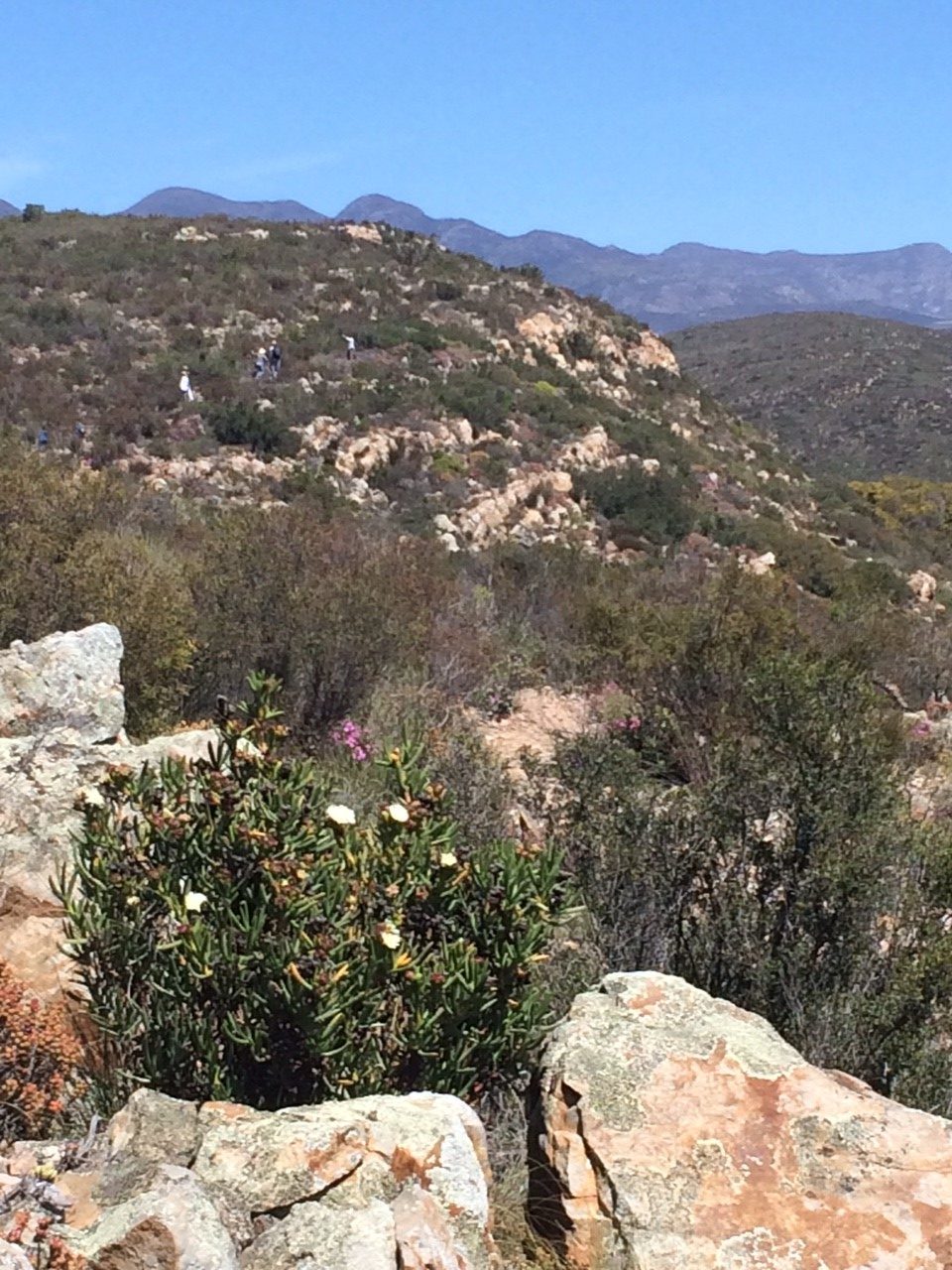THE GEOLOGY OF THE KRANS NATURE RESERVE
Posted by Ayanda Khuzwayo on 27 November 2018 7:35 AM CAT


The McGregor Heritage Society celebrated Heritage Day 2018 with a ramble along the paths of the Krans Nature Reserve. This was preceded by a fascinating talk on the geology of the area given by the longstanding member and amateur geologist Mike Kamstra.
So what do McGregor, east coast Argentina, the Falkland Islands, and Antarctica share in common? You don’t have to look far, as the answer is right under your feet… and also features on a local nature walk you can enjoy.
These locations were united when they formed the shores of a large inland sea from the mega-continent Gondwana, 500M years ago (Map of Gondwana). They became some of Earth’s earliest rocks – the deepest being Table Mountain Sandstone from sea sediments laid down 480-400M years ago. Huge tectonic forces pulled Gondwana apart 200M years ago and folded rock layers into our surrounding Langeberg and Riviersonderend mountains. Most of the surface geology of McGregor village consists of mudstone, or Bokkeveld Shales, from the shrinking of the sea in the intervening period (400-375M yrs), trapped between these ranges. However, as slices of Africa moved down stepwise to produce massive faults, a local ‘anticline’ – a tilt of one of these – revealed the deeper Table Mountain sandstone in a ridge.
This can be seen along the beautiful Krans Reserve walks – an ancient geological feature made even before oxygen appeared on Earth.

